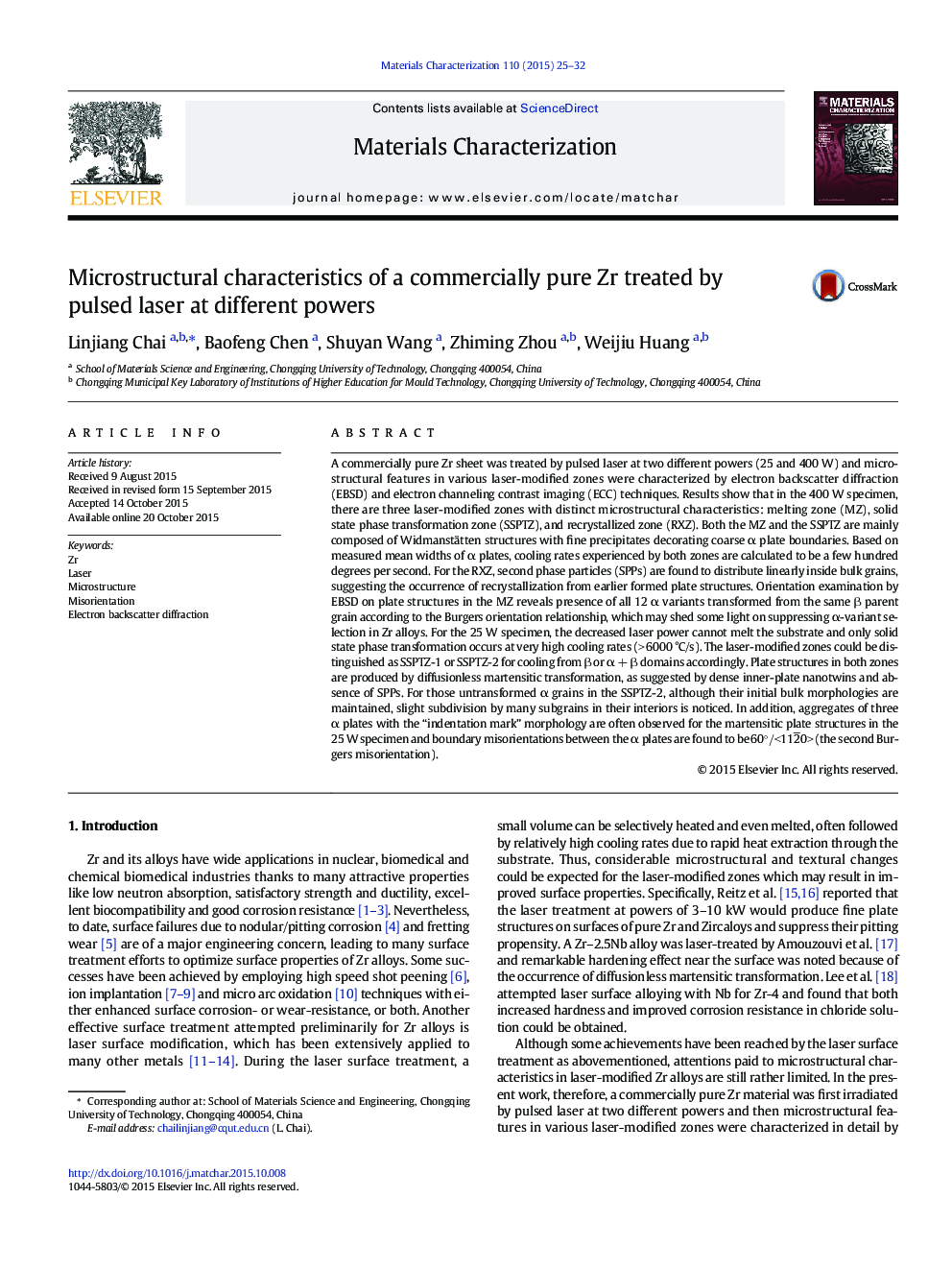| Article ID | Journal | Published Year | Pages | File Type |
|---|---|---|---|---|
| 1570679 | Materials Characterization | 2015 | 8 Pages |
Abstract
A commercially pure Zr sheet was treated by pulsed laser at two different powers (25 and 400 W) and microstructural features in various laser-modified zones were characterized by electron backscatter diffraction (EBSD) and electron channeling contrast imaging (ECC) techniques. Results show that in the 400 W specimen, there are three laser-modified zones with distinct microstructural characteristics: melting zone (MZ), solid state phase transformation zone (SSPTZ), and recrystallized zone (RXZ). Both the MZ and the SSPTZ are mainly composed of Widmanstätten structures with fine precipitates decorating coarse α plate boundaries. Based on measured mean widths of α plates, cooling rates experienced by both zones are calculated to be a few hundred degrees per second. For the RXZ, second phase particles (SPPs) are found to distribute linearly inside bulk grains, suggesting the occurrence of recrystallization from earlier formed plate structures. Orientation examination by EBSD on plate structures in the MZ reveals presence of all 12 α variants transformed from the same β parent grain according to the Burgers orientation relationship, which may shed some light on suppressing α-variant selection in Zr alloys. For the 25 W specimen, the decreased laser power cannot melt the substrate and only solid state phase transformation occurs at very high cooling rates (> 6000 °C/s). The laser-modified zones could be distinguished as SSPTZ-1 or SSPTZ-2 for cooling from β or α + β domains accordingly. Plate structures in both zones are produced by diffusionless martensitic transformation, as suggested by dense inner-plate nanotwins and absence of SPPs. For those untransformed α grains in the SSPTZ-2, although their initial bulk morphologies are maintained, slight subdivision by many subgrains in their interiors is noticed. In addition, aggregates of three α plates with the “indentation mark” morphology are often observed for the martensitic plate structures in the 25 W specimen and boundary misorientations between the α plates are found to be 60°/<112Ì
0> (the second Burgers misorientation).
Related Topics
Physical Sciences and Engineering
Materials Science
Materials Science (General)
Authors
Linjiang Chai, Baofeng Chen, Shuyan Wang, Zhiming Zhou, Weijiu Huang,
